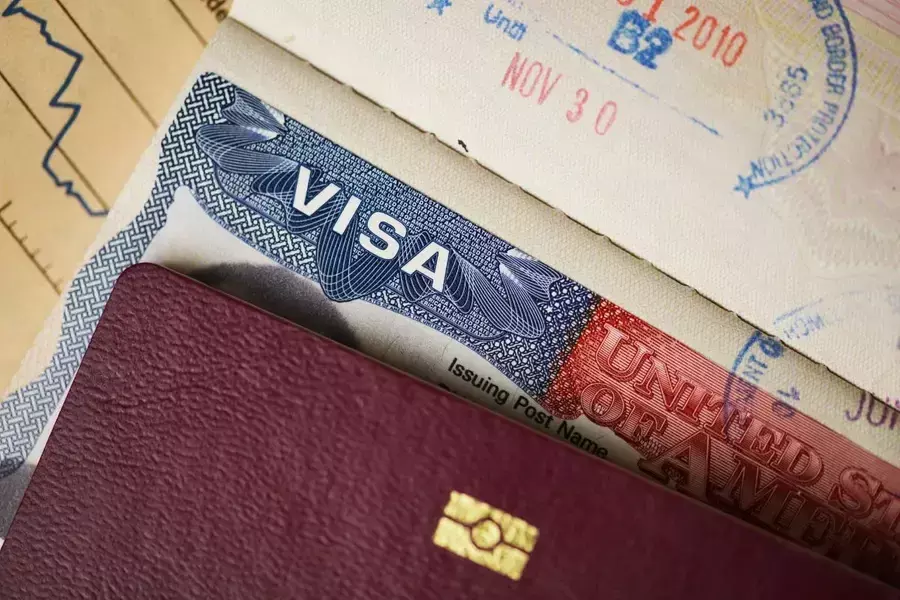US visa fee increased to Rs 37,000 from Jan 2026; check details
US universities, which rely heavily on international enrolment, particularly from India, may see reduced demand for graduate and undergraduate programs
By Anoushka Caroline Williams
US visa fee increased to Rs 37,000 from Jan 2026; check details
Hyderabad: Beginning January 2026, the US visa fee will rise sharply for Indian applicants.
US Department of Homeland Security has rolled out a new USD 250 `Visa Integrity Fee’ across most non-immigrant visa categories.
The policy is part of a broader immigration reform package approved earlier this month under the Trump administration.
This one-time fee, which functions as a refundable security deposit, will be levied on applicants of student (F/M), business and tourist (B1/B2), work (H-1B), and exchange (J) visas. With additional charges such as the I-94 and ESTA fees, Indian travellers may end up paying close to ₹40,000 for a US tourist visa, a jump of nearly 2.5 times from the current ₹16,000.
Burden on Students and Professionals
For students, already navigating rising tuition and living costs, the added financial strain is forcing a rethink. “Many Indian students who had shortlisted US universities for 2026 intake are now considering fast-tracking their applications or deferring to countries like Germany or France,” said Devjyothi Menon, a Hyderabad-based education consultant who works with international applicants, speaking to Newsmeter.
He added, “The biggest concern is not just the increase in cost, but the ambiguity around the refund mechanism. For students and professionals, the money could be locked up for years unless they leave the US exactly within five days of visa expiry without seeking an extension.”
Visa Fee Breakdown and Conditions
Under the new policy:
• A non-immigrant visa applicant will pay the standard visa fee (e.g. $185 for B1/B2) plus
• Visa Integrity Fee: $250
• I-94 processing fee: $24
• ESTA fee (where applicable): $13
The Visa Integrity Fee is refundable only under specific compliance conditions. For instance, if a tourist leaves the US promptly after visa expiry without overstaying, the amount may be refunded. However, visa holders applying for an extension, changing their status, or overstaying even marginally risk losing the deposit.
Students Weigh Options
“I was planning to apply for a Master’s in Public Policy in the US, but this announcement has made me anxious,” said Nirali Shankar, a 22-year-old final-year student. “The refund conditions sound impractical for a student who may need Optional Practical Training or a visa extension. Why pay extra for uncertainty?”
Potential Impact on Universities and Firms
US universities, which rely heavily on international enrolment, particularly from India, may see reduced demand for graduate and undergraduate programs. Industry observers also fear that tech companies dependent on Indian engineering talent may feel the pinch.
“Even companies that routinely sponsor H-1B workers are now recalculating the total cost of overseas hiring,” Menon noted. “This could have long-term implications for talent mobility and innovation pipelines.”
Rush Expected Before Fee Kicks In
Consultants expect a sharp surge in US visa applications between now and December 2025, as applicants rush to book appointments before the higher fee takes effect.
According to the US National Travel and Tourism Office, nearly 1.9 million Indian visitors travelled to the US between January and October 2024. If current trends hold, the new fee could substantially dent tourism and business travel numbers after January 2026.
Conclusion
While the US government insists the new fee is a “compliance tool,” the lack of clarity around its enforcement and refund mechanism has caused concern among students, travellers, and employers alike. As costs rise and immigration processes tighten, many Indians are looking toward more affordable, predictable alternatives for education and employment abroad.